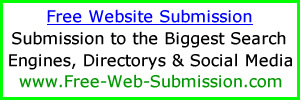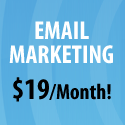Posts Tagged ‘ezine’
How To Manage Multiple Email Lists
December 5th, 2010Posted in Email, How To, List Building
Tags: bulk email Email ezine free traffic marketing newsletter promotion
Spam: Where it Came From, and How to Escape It
May 10th, 2010Posted by Tom Kulzer (AWeber CEO)
In 1936, long before the rise of the personal computer, Hormel Foods created SPAM. In 2002, the company will produce it’s six billionth can of the processed food product. But that mark was passed long ago in the world of Internet spam.
- Who Cooked This!? (How did it all start?)
- Why Does Bad Spam Happen to Good People?
- Stop The Flood to Your Inbox
- Stay Off Spammed Lists in the Future
- Think You’re Not a Spammer? Be Sure.
- The Final Blow » Read more: Spam: Where it Came From, and How to Escape It
Email Deliverability Tips
May 9th, 2010Posted by Tom Kulzer (AWeber CEO)
Ensuring requested opt-in email is delivered to subscriber inboxes is an increasingly difficult battle in the age of spam filtering. Open and click thru response rates can be dramatically affected by as much as 20-30% due to incorrect spam filter classification.
Permission
Confirming that the people who ask for your information have actually requested to be on your list is the number one step in the battle for deliverability. You should be using a process called confirmed opt-in or verified opt-in to send a unique link to the attempted subscriber when they request information. Before adding the person to your list they must click that unique link verifying that they are indeed the same person that owns the email address and requested to subscribe.
Subscriber Addresses
When requesting website visitors to opt-in ask for their “real” or “primary” email address instead of a free email address like Yahoo or Hotmail. Free emails tend to be throw away accounts and typically have a shorter lifetime than a primary ISP address.
List Maintenance
Always promptly remove undeliverable addresses that bounce when sending email to them. An address that bounces with a permanent error 2-3 times in a 30 day period should be removed from the list. ISP’s track what percentage of your newsletters bounce and will block them if you attempt to continually deliver messages to closed subscriber mailboxes.
Message Format
Usage of HTML messages to allow for text formatting, multiple columns, images, and brand recognition is growing in popularity and is widely supported by most email client software. Most spam is also HTML formatted and thus differentiating between requested email and spam HTML messages can be difficult. A 2004 study by AWeber .com shows that plain text messages are undeliverable 1.15% of the time and HTML only messages were undeliverable 2.3%. If sending HTML it is important to always send a plain text alternative message, also called text/HTML multi-part mime format.
Content
Many ISP’s filter based on the content that appears within the message text.
- Website URL:Research potential newsletter advertisers before allowing them to place ads in your newsletter issues. If they have used their website URL to send spam, just having their URL appear in your newsletter could cause the entire message to be filtered.
Words/phrases:
Choose your language carefully when crafting messages. Avoid hot button topics often found in spam such as medication, mortgages, making money, and pornography. If you do need to use words that might be filtered, don’t attempt to obfuscate words with extra characters or odd spelling, you’ll just make your messages appear more spam like.
Images:
Avoid creating messages that are entirely images. Use images sparingly, if at all. Commonly used open rate tracking technology uses images to calculate opens. You may choose to disable open rate tracking to avoid being filtered based on image content.
Attachments:
With viruses running rampant and spreading thru the usage of malicious email attachments many users are wary of attached documents. It’s often better to link to files via a website URL to reduce recipient fear of attachments and reduce the overall message size.
CAN-SPAM Compliance
The January 2004 Federal CAN-SPAM law introduced a number of rules regarding the delivery of email. It’s important you have your legal counsel review your practices and ensure you are in compliance. The two most important rules include having a valid postal mail address listed in all commercial messages and a working unsubscribe link that is promptly honored to remove the subscriber from future messages.
Reputation
Reputation services are often used by large ISP’s as a way to vet email senders regarding their email practices and policies. Businesses listed with these services are then given less stringent filtering or no filtering at all. Several reputation services are:
- http://www.isipp.com/iadb.php
- http://www.bondedsender.com
- http://www.habeas.com
Relationships & Whitelisting
Contact with major ISP’s and email providers is essential in letting them know about your requested subscriber email. Many large providers such as AOL and Yahoo have specific whitelisting programs and postmaster website areas to ensure your email is delivered as long as you meet their policies and procedures in handling your opt-in list.
Email deliverability is about ensuring requested opt-in email is delivered to the intended recipient. While no single tip will enable you to get 100% of your email delivered each one utilized as a group can go a long way to reaching that goal.
.
=-> Learn how to setup your own email list, Increase your sales using these methods, to get started you need a Aweber account.
Posted in Email, List Building
Tags: bulk email Email ezine Internet marketing List Building
Meat and Potatoes for Your Affiliate Diet
May 9th, 2010Think of banner ads as the spice in your affiliate diet. Sprinkle them around, but for a heartier helping of sales, you’ll need something more solid! Learn to give your visitors longer, more descriptive pre-sales text. Revamp your affiliate advertising using these simple steps:
- Pull the Reader in
- Introduce the Product
- Explain the Product’s Significance
- Tell the Reader to Make a Purchase
Pull the Reader in
To convince your audience that your text is worth reading, make your first sentence or two very interesting. Make a bold statement, say something seemingly ridiculous, or appeal to your prospect’s emotional side. Then, tie this grabber in with the rest of your copy.
Introduce the Product
What is the product you’re advertising? What does it do? Directly after your grabber, give a compact explanation of your product. Keep this explanation short, while still being very clear. This should still be a very short section of your text.
Explain the Product’s Significance
What will it do for me?
By writing your own copy, you can directly target your unique audience. Make the most of this opportunity! Clearly explain how your readers will benefit from this product.
No one knows your audience like you do. Suggest a variety of product uses just for them, and give examples. This is the time for details – make this section long and rich.
Tell the Reader to Make a Purchase
You’ve come so far – you’ve laid out exactly what the product is and how it will help your unique audience. Now, seal the deal – tell your readers to purchase the product! Include your affiliate link in this section.
This step may sound strange, but it’s necessary. Often, people hear about a product and are genuinely interested, but fail to actually make a purchase. A clear call to a simple action cuts down on buyer ambivalence. Don’t be pushy – just change your verb tenses to the imperative. Instead of:
“If you think that you fit this profile, you might want to think about buying this product.”
Say: “Click here to order an account today.”
Drive Sales – Use Long Copy
If you don’t feel ready to write long copy yourself, ask your affiliate program manager for help! Many companies release well-written articles by respected authors that you can reprint free of charge.
The novelty of the Web is wearing off. People online now are busy. Surfers won’t make a purchase unless you make a great case for what they’ll get out of it. And you’re not going to do that with just a banner ad.
.
=-> Increase your sales using these types of methods, to get started you need a Aweber account.
Do Your Customers Forget About You?
May 8th, 2010Posted by Tom Kulzer (AWeber CEO)
Your web business probably gets product inquiries from potential customers around the globe. Inquiries come via e-mail and your web site, and you try to send information to each hot prospect as quickly as you can. You know that you can drastically increase the likelihood of making a sale by satisfying each person’s need for information quickly!
But, after you’ve delivered that first bit of information to your prospect, do you send him any further information?
If you are like most Internet marketers, you don’t.
When you don’t follow that initial message with additional information later on, you let a valuable prospect slip from your grasp! This is a potential customer who may have been very interested in your products, but who lost your contact information, or was too busy to make a purchase when your first message reached him.
Often, a prospect will purposely put off making a purchase, to see if you find him important enough to follow up with later. When he doesn’t receive a follow up message from you, he will take his business elsewhere.
Are you losing profits due to inconsistent and ineffective follow up?
Following up with leads is more than just a process – it’s an art. In order to be effective, you need to design a follow up system, and stick to it, EVERY DAY! If you don’t follow up with your prospects consistently, INDIVIDUALLY, and in a timely fashion, then you might as well forget the whole follow up process.
Consistent follow up gets results!
When I first started marketing and following up with prospects, I used a follow up method that I now call the “List Technique.” I had a large database containing the names and e-mail addresses of people who had specifically requested information about my products and services. These prospects had already received my first letter by the time they requested more information, so I used the company’s latest news as a follow up piece.
I would write follow up newsletters every now and then, and send them, in one mass mailing, to everyone who had previously requested information from me. While this probably did help me win a few additional orders, it wasn’t a very good follow up method. Why isn’t the “List Technique” very effective?
- The List Technique isn’t consistent. Proponents of the List Technique tend to only send out follow up messages when their companies have “big news”.
- List Technique messages don’t give the potential customer any additional information about the product or service in question. He can’t make a more informed buying decision after receiving a newsletter! If someone is wondering whether your company sells the best knick-knacks, what does he care that you’ve just moved your headquarters?
- List Technique messages convey a “big list” mentality to your potential customers. When I used to write follow up messages using the List Technique, I was writing news bulletins to everyone I knew! I should have been sending a personal message to each individual who wanted to know more about my products.
What follow up method really works?
Following up with each lead individually, multiple times, but at set intervals, and with pre-written messages, will dramatically increase sales! Others who use this same technique confirm that they have all at least doubled the sales of various products! In order to set this system up, though, you need to do some planning.
First, you’ll need to develop your follow up messages. If you’ve been marketing on the Internet for any length of time, then you should already have a first informative letter. Your second letter marks the beginning of the follow up process, and should go into more detail than the first letter. Fill this letter with details that you didn’t have the space to add to the first letter. Stress the BENEFITS of your products or services!
Your next 2-3 follow up messages should be rather short. Include lists of the benefits and potential uses of your products and services. Write each letter so that your prospects can skim the contents, and still see the full force of your message.
The next couple of follow up messages should create a sense of urgency in your prospect’s mind. Make a special offer, giving him a reason to order NOW instead of waiting any longer. After reading these follow up messages, your prospect should want to order immediately!
Phrase each of your final 1 or 2 follow up messages in the form of a question. Ask your prospect why he hasn’t yet placed an order? Try to get him to actually respond. Ask if the price is to high, the product isn’t the right color or doesn’t have the right features, or if he is looking for something else entirely. (By this time, it’s unlikely that this person will order from you. However, his feedback can help you modify your follow up letters or products, so that other prospects will order from you.)
The timing of your follow up letters is just as important as their content. You don’t want one prospect to receive a follow up the day after he gets your initial informative letter, while another prospect waits weeks for a follow up!
Always send an initial, informative letter as soon as it is requested, and send the first follow up 24 hours afterwards. You want your hot prospects to have information quickly, so that they can make informed buying decisions!
Send the next 2-3 follow up messages between 1 and 3 days apart. Your prospect is still hot, and is probably still shopping around! Tell him about the benefits of your products and services, as opposed to your competitors’. You will make the sale!
Send the final follow up messages later on. You certainly don’t want to annoy your prospect! Make sure that these last letters are at least 4 days apart.
Following up effectively seems complicated, but it doesn’t have to be! So many potential customers are lost because of poor follow up – don’t you want to be one of the few to get it right?
.
=-> Increase your sales using these types of methods, to get started you need a Aweber account.
Posted in List Building, Traffic Generation
Tags: bulk email Email ezine How To List Building









